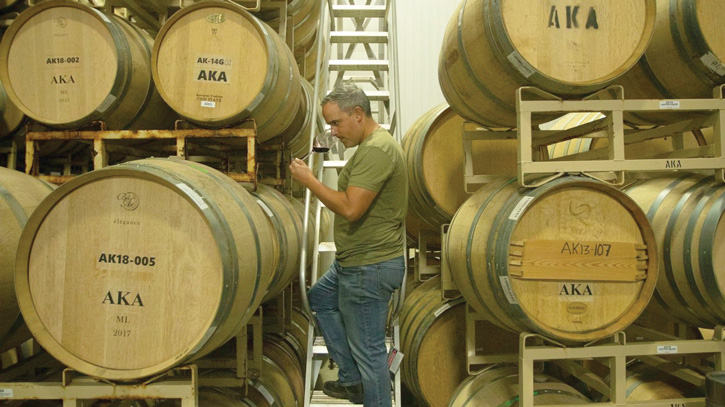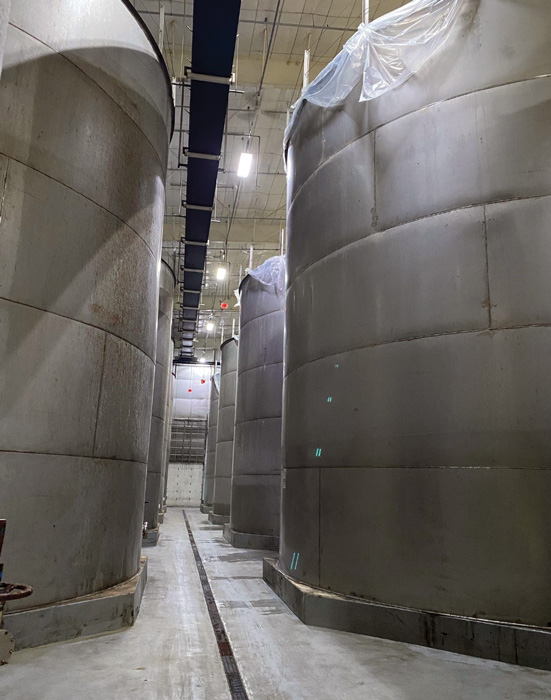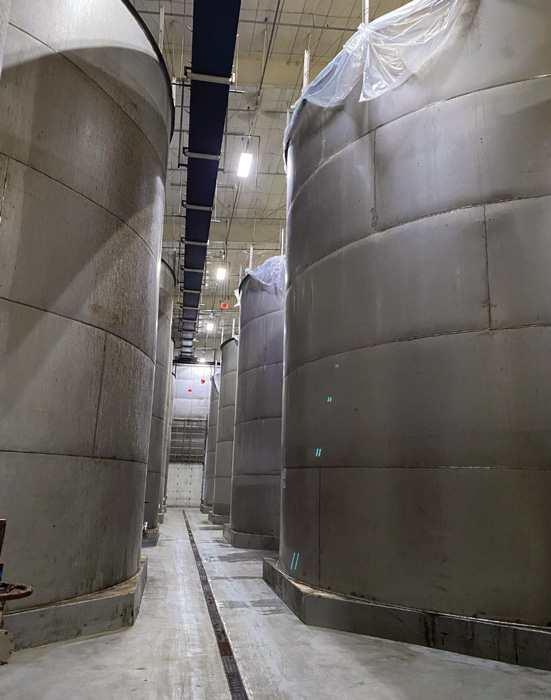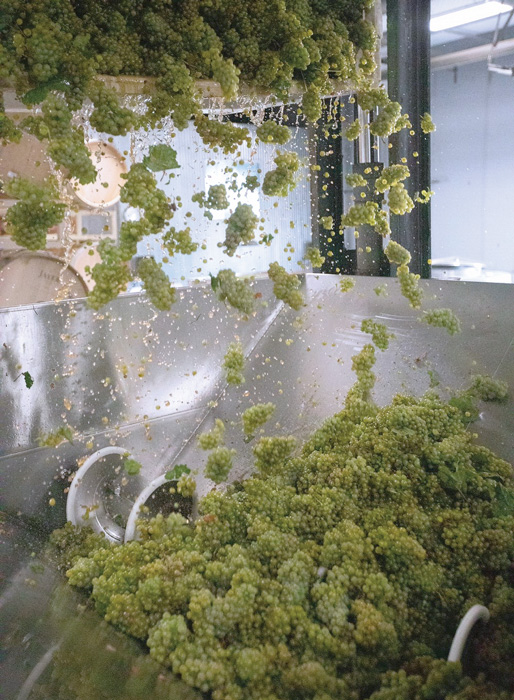Fermented Foods Processing: Flavor, Preservation, and Health
PROCESSING
Though fermentation is an ancient process used to prevent food from spoiling, it has recently exploded in popularity and has experienced rapid market growth due to reports that consuming fermented foods positively affects the gut microbiome and human health. The New York Times, The Washington Post, and the Wall Street Journal have all reported on the benefits of consuming fermented foods and their popularity on restaurant menus and on grocery store shelves.
The annual value of fermented foods in the U.S. market includes wine at >$60 billion, cheese at >$30 billion, beer at >$90 billion and total alcohol at >$250 billion, bread at >$30 billion, fermented vegetables at >$500 million, fermented meats at approximately $2 billion, yogurt at >$7 billion, kombucha at approximately $2 billion, and kefir at approximately $1 billion (Statista 2021, Allied Market Research 2021). Markets for all of these products are expected to continue to increase in value over the next decade, with extensive growth for yogurt, kefir, kombucha, and vegetables. The estimated global market for these specific products is between five and 15 times greater than what is reported for the U.S. market.
Fermentation Chemistry
Fermentation is a biochemical reaction that extracts energy from carbohydrates without using oxygen. Under anaerobic conditions, microbes break down sugar into alcohol, acid, and/or gas to produce adenosine triphosphate to stay alive, but the microbes also produce ethanol, carbon dioxide, and lactic acid, which increase product shelf life and impart desirable sensory properties.
For lactic acid bacteria, there are two parts to fermentation. First, glycolysis occurs in which the bacteria oxidize glucose and 2NAD+ reduces to 2NADH and produces two pyruvate molecules. In the second step of fermentation, pyruvate molecules are then reduced to lactic acid while NADH is oxidized to NAD+, a process termed NAD+ regeneration.
In the production of beer or wine, the yeast, such as Saccharomyces cerevisiae, will metabolize the sugar into pyruvate, in a process similar to lactic acid fermentation. However, with yeast, two carbon dioxide molecules are released from the pyruvate and acetaldehyde is formed. The acetaldehyde is then reduced to ethanol, while NADH is oxidized to NAD+.
Fermentation Flavor
The desirable flavor of fermented foods is predominantly due to the acid, sugar, and volatile flavor compounds. As the bacteria and/or yeast consumes sugars, nonvolatile acids and volatile aroma compounds are formed.
In sauerkraut, glucose and fructose are consumed by lactic acid bacteria (LAB), and the end product contains glucose, fructose, citric acid, malic acid, acetic acid, and lactic acid. The concentrations of these sugars, acids, and volatile aroma compounds contribute to the flavor (Satora et al. 2021). The volatile flavor compounds include esters, alcohols, carbonyl compounds, sulfur compounds, acids, terpenes, and nitriles, with the characteristic flavors of salty, sour, sulfur, pungent, and fermented (Satora et al. 2021). There will be different flavors associated with different fermented foods, but the unique tastes and aromas will be due to sugar, acid, and volatile flavor compound composition.
Fermentation for Food Sustainability
Primary fermentation involves microorganisms, such as yeast and bacteria, enzymatically breaking down carbohydrates to produce carbon dioxide, organic acids, or alcohol. Fermentation contributes to food sustainability through preservation, safety, and production of food components.
For example, wine has a pH of 3.0–4.0 due to acid content (tartaric, malic, citric, and lactic) and contains alcohol, which preserves the wine and makes it safe for consumption by inhibiting pathogen growth. An unopened bottle of wine will remain drinkable for a minimum of one year, but once opened will last less than a week. The wine will not be unsafe after one week, but will contain off-flavors.
Health Benefits
Consumption of fermented milk products with live cultures, such as yogurt and kefir, have been inversely correlated with type 2 diabetes, osteoporosis, impaired glucose metabolism, and decreased brain activity (Marco et al. 2017). Besides the phytochemicals, such as flavonoids and anthocyanins from the raw food materials, the live bacteria produce acids that help regulate glucose, blood pressure, diabetes, and cardiovascular diseases. The LAB in sauerkraut, including Lactobacillus plantarum, lessens inflammation and the presence of bad bacteria living within the gastrointestinal (GI) tract.
Probiotic bacteria in fermented/cultured foods provide health benefits, including reduced overall inflammation (both in and out of the GI tract), improvement of digestive disorders—like leaky gut syndrome and ulcerative colitis, improved immunity, and better nutrient absorption. Marco et al. (2020) reported that microbes in our diet, especially those from fermented foods, are linked to a reduced risk of cardiovascular disease, reduced risk of weight gain and type 2 diabetes, healthier metabolic profiles (blood lipids, glucose, pressure, and insulin resistance), and positively altered immune responses.
Dairy Fermentation
Fermented dairy products are made from milk and include, but are not limited to, cheese, yogurt, and kefir. Yogurt and kefir contain live cultures similar to those present in probiotic supplements. The dairy food matrix buffers the pH of the stomach to protect the probiotic cultures so they are alive when they reach the small intestines. Lactobacillus delbrueckii ssp. bulgaricus and ssp. lactis are commonly used in freeze-dried yogurt starter cultures. These bacteria, along with Bifidobacterium, produce conjugated linoleic acids, vitamins, and bioactive peptides. Yogurt milk contains sucrose and/or glucose or a non-calorie sweetener and a stabilizer such as pectin, starch, or agar. The milk is generally standardized, deaerated, homogenized, and pasteurized prior to inoculation and fermentation (Tetra Pak 2021).
Kefir has traditionally been produced using kefir grains, which consist of a mixture of lactic acid bacteria, yeasts, and acetic acid bacteria in a polysaccharide and protein matrix. Most kefir produced today is made with a freeze-dried starter culture that contains a similar microbial composition to kefir grains. The diversity in bacteria and the presence of yeast provide a unique flavor different than yogurt, with a small percentage of ethanol. As we learn more about how probiotics and fermented foods containing live cultures beneficially impact the human microbiome and gut health, kefir and yogurt will likely continue to grow in the marketplace.
Meat Fermentation
Examples of fermented meats include pepperoni, summer sausage, and salami. These products can last for months, if not years, due to culturing with Micrococcus, Lactobacillus, and/or Leuconostoc, which are used to bring the pH of the meat to approximately 5.0 over time so that the pH is at the approximate isoelectric of the salt-soluble proteins, myosin and actin. This causes moisture loss such that the water activity and salt content make the product shelf stable. This is a relatively short process of 2–3 days for semidry sausages, like summer sausage. But for dry sausages, like pepperoni and hard salami, it can take 30 days or longer, and more than 90 days for genoa, in which the green room, or fermentation room, has specific temperatures, relative humidity, and air flow to dry the meat and optimize quality.
Vegetable Fermentation
Two fermentation products produced from cabbage include sauerkraut and kimchi. Sauerkraut can be made through natural fermentation or through the addition of a starter culture, while kimchi is made through spontaneous fermentation from vegetables, including cabbage, chives, radishes, and leeks.
Kimchi has become a hugely popular consumer good. According to Mike Maney, the director of technical services at GLK Foods, the largest sauerkraut producer in the world, “All of our sauerkraut is naturally fermented. We cut in excess of 120 tons of cabbage per hour and utilize high-speed color/vision sorters and lasers to sort out defects in the sliced cabbage. We automatically add salt in-line by weight to ensure product quality. We are confident that there will be continued growth in all fermented foods, especially sauerkraut. Every day there seems to be new findings regarding the benefits of fermented foods with respect to gut health, reducing inflammation in the body, and antioxidant properties.”
Low-Intervention Wine
Low-intervention, or natural, wine is produced from hand-picked grapes that are fermented using yeast native to the environment, with small quantities of sulfites and no other added ingredients. Conventional wine is commonly made from machine-harvested grapes with the following added ingredients: 1) yeast to control the fermentation process and flavor, 2) acid to increase acidity to help the aging process, and 3) sulfites at bottling (up to 350 ppm) to stop fermentation and preserve flavor (Bull 2019).
Gustavo A. Sotelo is the winemaker at Scribe, a vineyard that produces low-intervention wines. According to Sotelo, “The global wine movement for low-intervention wines has been on the rise for the last decade. All our wine fermentation occurs naturally, using indigenous yeast coming in from the vineyard. Our sparkling, white wine, and rosé wines are fermented cold to retain purity and freshness in the wines. Our skin-fermented chardonnay and our red wine fermentations occur much warmer and in open-top tanks to extract color, flavor, and aroma from the skins.”
The Future of Fermented Foods
Future trends in fermentation will include a greater focus on natural fermentation and increased growth in the craft beer, kombucha, vegetable fermentation, yogurt, and kefir markets. There will also be increased growth in fermented food markets as researchers learn more about the relationship between the composition of different fermented foods, the human gut microbiome, and human health.
Whether it is for health reasons, flavor, preservation, environmental concerns, or a combination of these reasons, fermented foods will continue to thrive and increase in the United States and in global markets. In addition, with the increased availability of kombucha, sauerkraut, and craft beer kits, there will also be an increase in the home production of fermented foods.
REFERENCES
Allied Market Research. 2021. https://www.alliedmarketresearch.com/.
Bull, Marian. 2019. “Natural wine explained.” https://www.vox.com/the-goods/2019/6/10/18650601/natural-wine-sulfites-organic.
Marco, M. L. et al. 2017. “Health benefits of fermented foods: microbiota and beyond.” Curr. Opin. Biotechnol. 44: 94–102.
Marco, M. L. et al. 2020. “Should there be a recommended daily intake of microbes?” Journal of Nutrition, Issues and Opinions. 150: 3061–3067.
Satora, O., M. Skotniczny, S. Strnad, et al. 2021. “Chemical composition and sensory quality of sauerkraut produced from different cabbage varieties.” LWT-Food Science and Technology. 136(1):110325.
Statista. 2021. https://www.statista.com/.
Tetra Pak. 2021. “Fermented Milk Products.” The Dairy Processing Handbook. Tetra Pak. https://dairyprocessinghandbook.tetrapak.com/.






